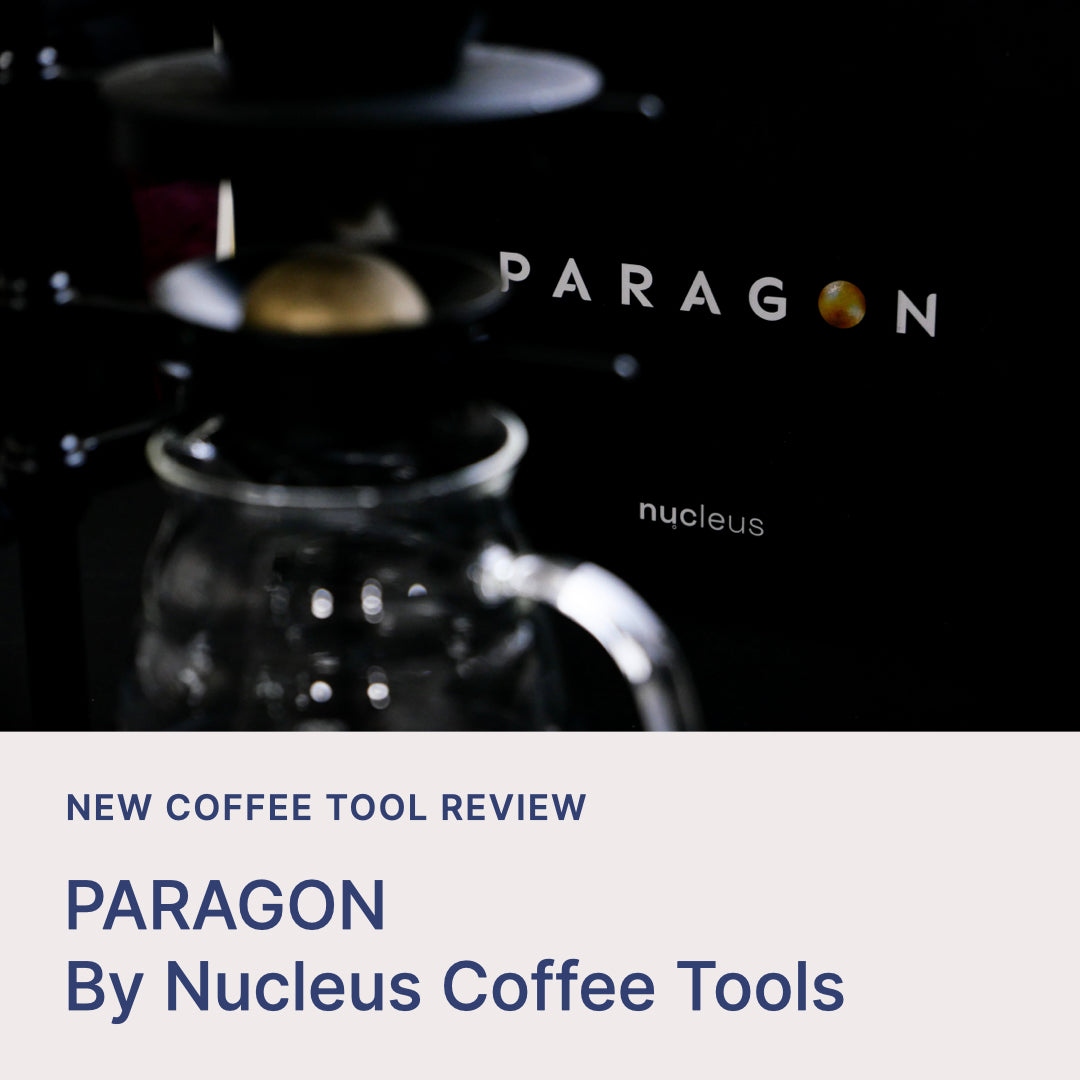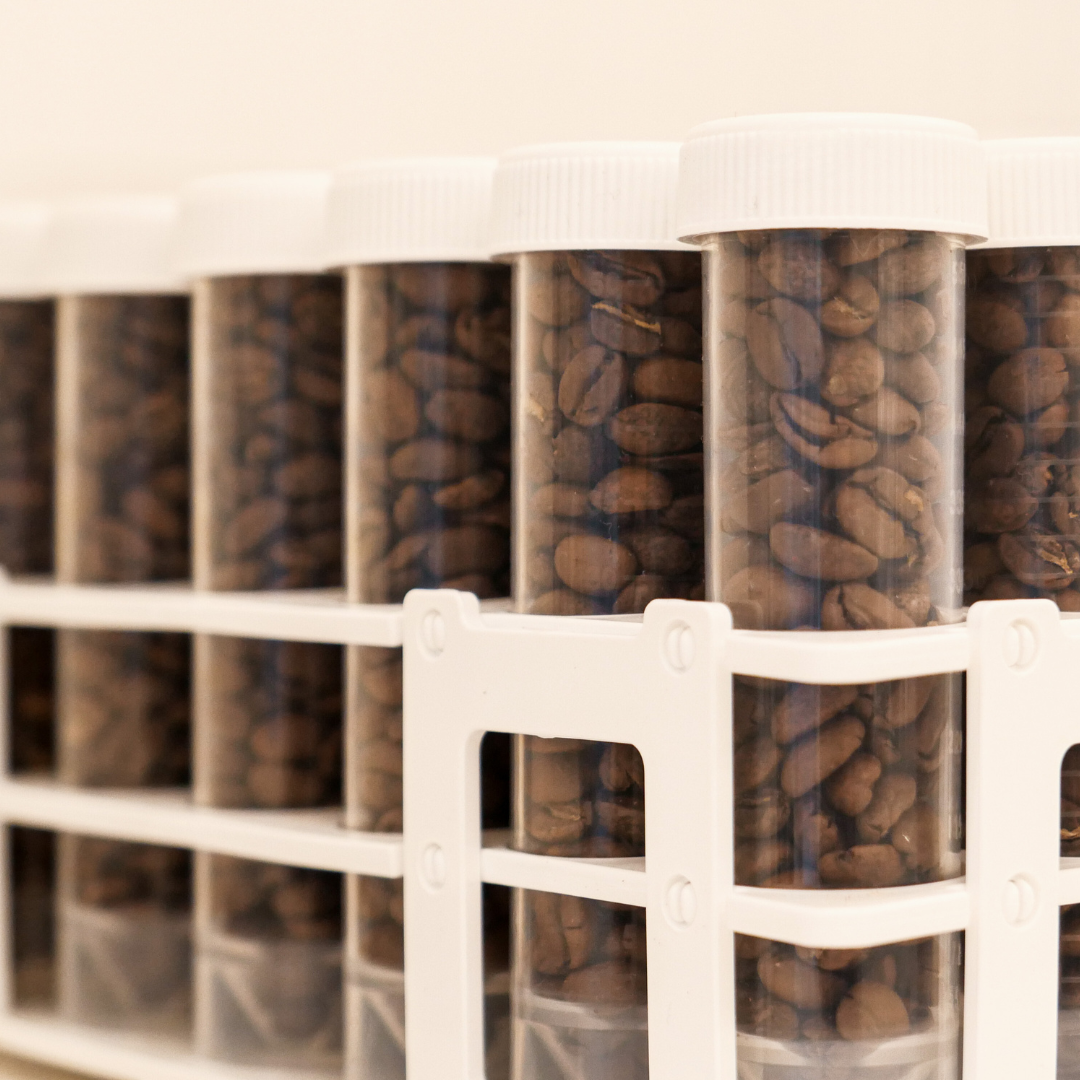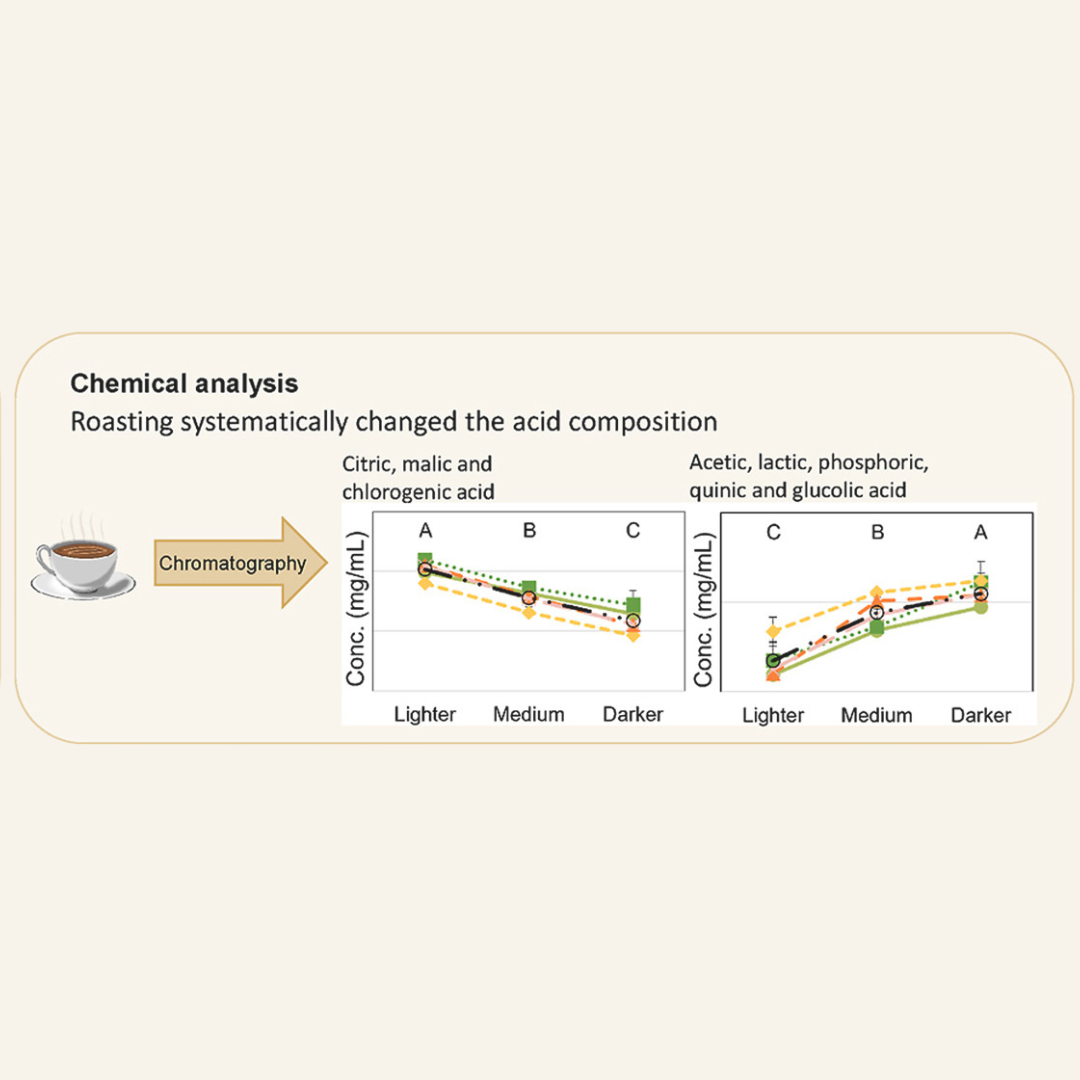What is Paragon?
Have you heard about Paragon? You might be wondering what the heck that is and where you could see it and try it (It’s still not released on the market but will be debuting shortly).
Paragon is one of the most recently created coffee tools that helps baristas brew their coffee more delicately and elegantly. The person who brought the idea and made it born is Sasa Sestic of Nucleus Coffee Tools, the 2015 World Barista Champion. As you may know, Sasa is brilliant and innovative and has positively influenced the coffee industry to move forward. With his company, Nucleus Coffee Tools, Sasa has launched many different coffee tools for baristas to make their coffee better hence better quality in coffee and service.
Design of Paragon
Let’s begin with the design of the tool. Paragon has a metal base, a pillar and three arms. Each arm holds a different element. The top arm holds a dripper. The clamp is strong enough to hold heavy drippers such as Hario V60 ceramic or Origami ceramic. The middle arm has a small filter and a golden metal ball. The brewed coffee liquid drops onto the ball, flows around it, and then travels through the filter towards the server. Lastly, the bottom arm collects tiny coffee drips from the middle arm when the middle arm is removed from brewing. All elements are made of metal and are painted in matt black, which makes the tool look luxurious.
Why is Paragon made? - Volatile Organic Compound
To be accurate, Paragon is not a brewing tool. Therefore, it does not affect anything on the coffee brewing itself. Instead, it does affect what comes right after the brewing. According to the research Sasa, Dr Chahan from Zhaw Univ. and his team from Nucleus Coffee Tools did, there are 80 to 120 volatile organic compounds in coffee (amount and intensity depend on coffee), and we can detect approximately 30 of those. We could only notice this because some VOCs are below our threshold, and hot temperature affects VOCs to be evaporated and dissolve in the air. As many VOCs almost smell like floral, fruity and complex, capturing and retaining VOCs in the liquid could help make coffee more complex and delicate.
Then, it’s a matter of how we capture the VOCs. To execute this, Sasa and his team applied many different technologies and arrived at a new technique called ‘Extraction Chilling’. The extraction chilling has been applied to capture VOCs in many other industries and has recently been used in barista championships by many competitors. Hugh Kelly, the 2021 Australian Barista Champion and the 3rd place World Barista Championship used this technic to capture VOCs for his espresso course, which enhanced the acidity and complex flavours of his Colombian coffee.
Which type of coffee works well with Paragon?
To review the tool, I have played with many different coffees and here is what I have found.
Paragon is excellent with
-
washed processed coffees, carbonic maceration processed coffees, enough fermentation applied coffees,
-
coffees grown in highlands, and
-
geisha, pacamara and Ethiopian varieties.
With these types of coffees, you can easily find the differences from the enhanced floralness, fruitiness and complexity. The degree of quality that Paragon elevates in a cup of coffee is so phenomenal and absolutely outstanding.
Paragon is good with
-
coffees having good quality acidity but slightly low in intensity and
-
coffees having enough but low intensity of floral and fruity flavour notes.
As Paragon enhances the quality of acidity and complexity, it helps make the cup of coffee more vibrant and lively.
Paragon is not good with
-
too much fermented processed coffees (e.g. double anaerobic process, etc.).
The flavours that Paragon enhances are primarily floral, fruity and complex notes which are not easily detected from heavily fermented coffees. Those coffees usually have a deep dark fruit note instead of light and complex, which means forcibly enhanced light characteristics could collapse with the heavy dark flavours, hence lacking flavour clarity. However, finely adjusting the timing and amount of passing through the ball could positively affect the final quality. As we know, it depends on baristas’ skills at the end of the day.
What method works well with Paragon?
Without a doubt, Paragon works perfectly with the 4:6 method that Tetsu Katsuya, the 2016 World Brewers Cup Champion, uses. You can activate the ball for the first two pours and deactivate it for the subsequent three pours. As most of the VOCs are extracted from the first approximately 30% of the entire brew, applying for the first two pours works absolutely great. With the Chanho-Tornado method, the structure should be adjusted. As all the water is poured at once, it is hard to divide the section to give on-and-off of the ball. Instead of separating the parts, provide a slightly higher water-to-coffee ratio of the blooming and let it come through the ball, which could affect the final quality.
So, do we Paragon or not?
Yeah, mate, definitely. It does good things with coffee. Then, why not?








